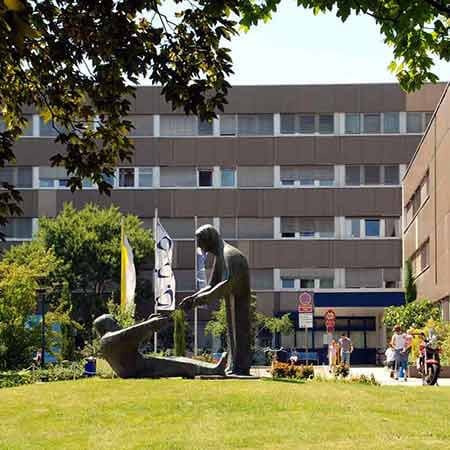About the disease
Fractured femur is the fracture of a thigh area. Femur is also known as a thigh bone. It is also known as the longest and strongest bone in human body. It accounts for almost 27% of height of a person. Femur is responsible for helping person to walk and jump. As femur is the strongest bone in the human body, it is not susceptible to usual fractures, which are common in older people and in people who have weak bone structure. Most fractures in femur are sustained in trauma or as a result of accident, when femur experienced great outward pressure or force. Such pressure or force can be sustained during a serious fall or a car accident. Sportsmen and athletes can also acquire fractured femur as a result of sport trauma.
There are two main types of fractured femur:
In the first type, a person experiences protrusion of one or several bone fragments through the skin. Such open fractures are also manifested by a visible wound, which can penetrate to the location of fracture. Open fractured femur is considered to be more dangerous than the distal one, as it takes a longer period to heal. Also, a wound can be a transmitter of an infection if treatment is not provided on time. Open fractured femur can also damage surrounding tissue of a thigh, thus causing more pain to the patient. Distal fractures are usually not visible and do not manifest itself in open wound. Their main danger is that the fractured femur can suppress the proper blood supply to the leg or it can damage the leg artery. Both types of fractured femur require immediate medical care in order to prevent complications in future.
Symptoms
- Acute pain in the thigh bone after an accident or a fall
- Patient is unable to straighten the injured leg
- Pain shock
- Injured leg may look deformed or shorter than the healthy one
- Inability to stand on the broken leg
Diagnosis
- During a general examination doctor will examine the leg for any sort of deformities and evaluate the extent of pain patient is in.
- X-ray of the leg is the most common diagnostic method for fractured femur. It will determine the exact location of the fracture, its type and whether or not surrounding tissues are damaged.
Treatment
Casting only may be used only in little children whose bones are still growing. Most often, fractured femur requires internal surgery in order to heal the leg.
Osteosynthesis is a surgery during which the fractured femur is fixated with special metal devices to keep the bone in place and help it grow together. During this surgery, surgeon makes an open excision in the place in fractured femur in order to access it. Then, surgeon connects the broken ends of fractured femur and immobilizes it with special metal plates. Metal plates will have to be worn for approximately 4 to 6 months to allow the bone to heal completely. During this time person may also be given special painkillers in order to reduce the pain. After metal devices are removed person needs to undergo physical therapy to restore the muscle strength and to mobilize the newly grown bone.
Authors: Dr. Vadim Zhiliuk, Dr. Sergey Pashchenko













